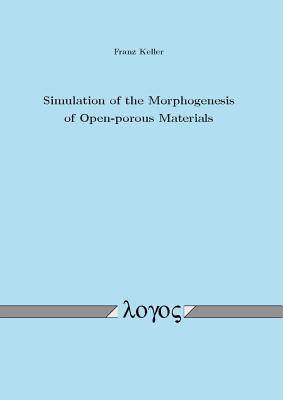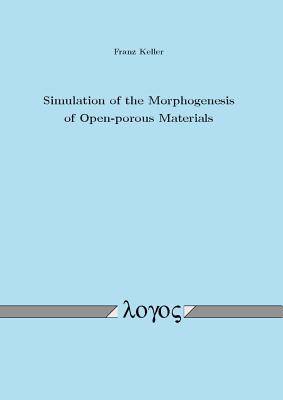
Je cadeautjes zeker op tijd in huis hebben voor de feestdagen? Kom langs in onze winkels en vind het perfecte geschenk!
- Afhalen na 1 uur in een winkel met voorraad
- Gratis thuislevering in België vanaf € 30
- Ruim aanbod met 7 miljoen producten
Je cadeautjes zeker op tijd in huis hebben voor de feestdagen? Kom langs in onze winkels en vind het perfecte geschenk!
- Afhalen na 1 uur in een winkel met voorraad
- Gratis thuislevering in België vanaf € 30
- Ruim aanbod met 7 miljoen producten
Zoeken
€ 135,45
+ 270 punten
Omschrijving
Open-porous functional materials play a crucial role in the field of chemical engineering, e.g. as catalysts, adsorbents and membranes. In many cases, the properties and performance characteristics of these materials are strongly determined and controlled by their open-porous morphology, which is specifically adjusted during the manufacturing step. Currently, the development of production procedures for such open-porous materials relies almost completely on empirical correlations and experimental experience, while no established model based support of the development process is available. In the present work, a contribution is made towards the development of a methodology for describing mesoscopic structure formation processes of open-porous materials. Based on the Smoothed Particle Hydrodynamics (SPH) framework, a meshless method has been developed, which is able to describe all of the relevant physical and chemical processes during the manufacturing step by solving the conservation equations of mass, momentum and energy on a quantitative basis. Due to its Lagrangian nature, the developed approach is capable to accurately describe the evolution of a heterogeneous multiphase body with evolving interfaces and large deformation as well as fragmentation of material with complex rheological behavior. Moreover, the interaction of compressible and incompressible phases, the coalescence of voids as well as diffusion and chemical reaction in the deforming body can be described. A strong focus has been laid on the accurate discretization of free surfaces and interfaces and the developed framework has been validated by means of several test cases. After validation, the approach has been applied to a reaction-induced pore formation process by release of a blowing agent. Thereby, all characteristics of a pore forming process have been addressed in the simulation and the applicability of the developed SPH based methodology to describe the formation of open-porous materials on a quantitative level has been demonstrated.
Specificaties
Betrokkenen
- Auteur(s):
- Uitgeverij:
Inhoud
- Aantal bladzijden:
- 335
- Taal:
- Engels
Eigenschappen
- Productcode (EAN):
- 9783832539627
- Verschijningsdatum:
- 30/04/2015
- Uitvoering:
- Paperback
- Formaat:
- Trade paperback (VS)
- Afmetingen:
- 145 mm x 211 mm
- Gewicht:
- 412 g

Alleen bij Standaard Boekhandel
+ 270 punten op je klantenkaart van Standaard Boekhandel
Beoordelingen
We publiceren alleen reviews die voldoen aan de voorwaarden voor reviews. Bekijk onze voorwaarden voor reviews.









